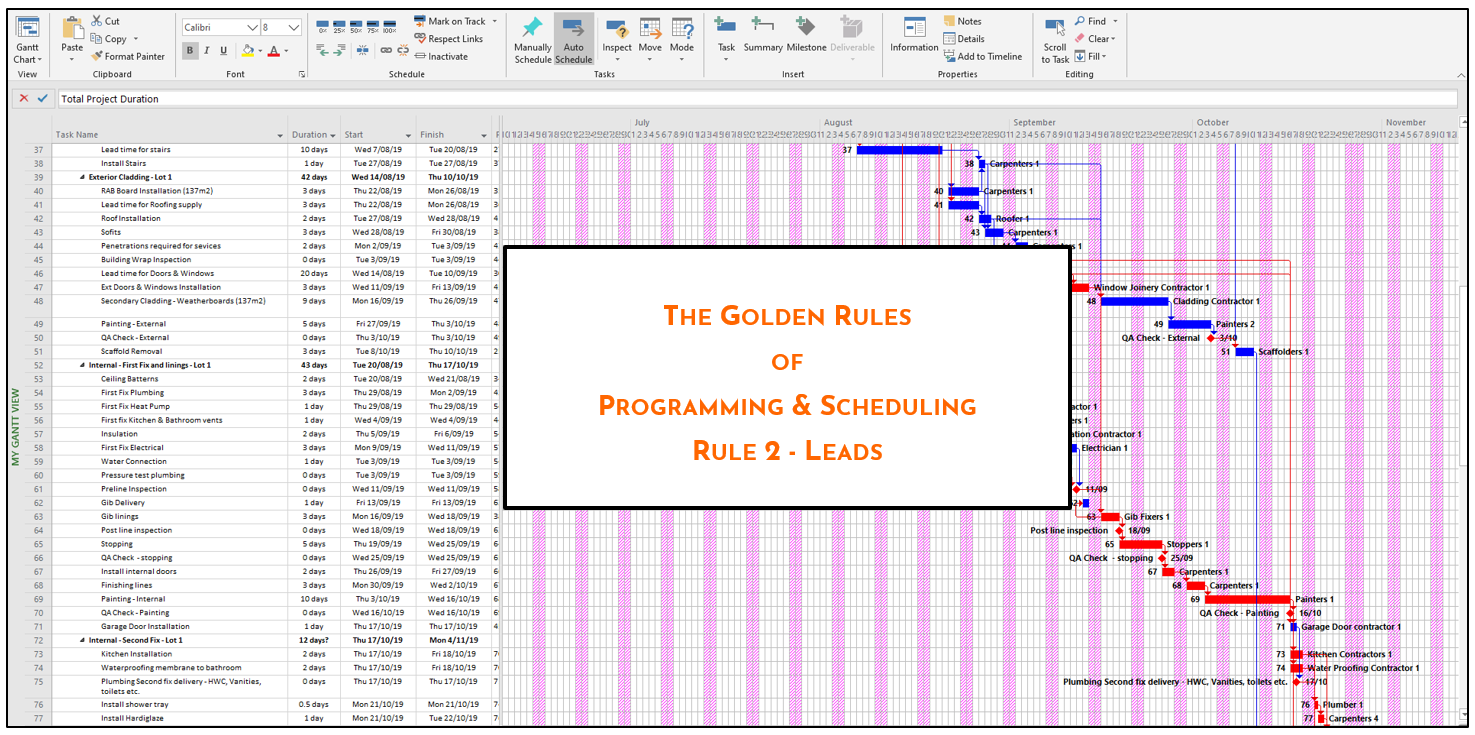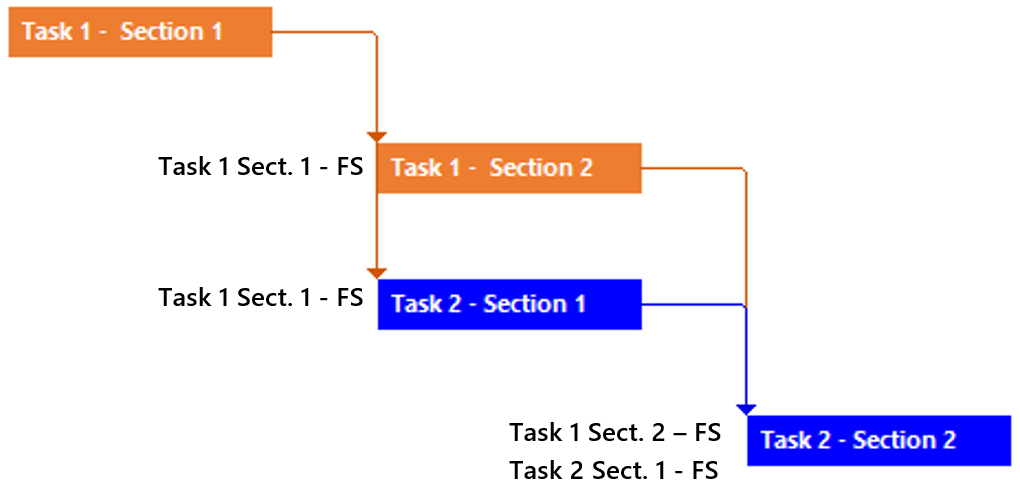
Leads
The DCMA guideline sets the test threshold for Leads as zero. In other words, they are not allowed.
A lead is a negative lag between two tasks in which the following task starts a given number of days before the finish date of its predecessor. This creates an overlapping relationship between the two activities. It is often seen being used as a way of programming works which follow slightly behind the primary task.

In creating a Lead (negative lag) like this you are commencing one activity based upon the predicted end or completion of another activity, which may or may not happen. Making a presumption like this is very risky…
For example, what if the first task doesn’t end for 2 months, due to a delay on a portion of the work? Using Leads can also have an adverse effect on the project’s total slack, making it difficult to determine the true critical path
For this reason, rather than using a Lead it is better to break the work down into separate sections and then the successor task sections would follow the actual completion of the predecessor section of the task. This is much closer to reality, and far more robust as a programming structure.

There is one exception to this rule that I make, and that is using a negative lead to indicate procurement milestones. Programmed in this way, it is used purely to create a flag warning and will not affect critical path.
